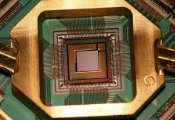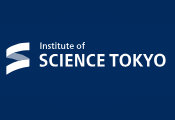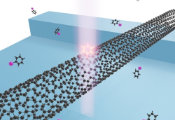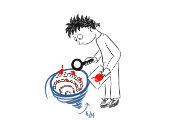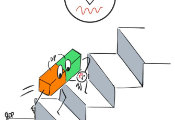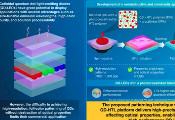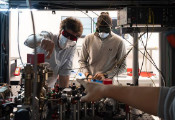Physicists Discover a Novel Quantum State in an Elemental Solid
Physicists have observed a novel quantum effect termed “hybrid topology” in a crystalline material. This finding opens up a new range of possibilities for the development of efficient materials and technologies for next-generation quantum science and engineering.
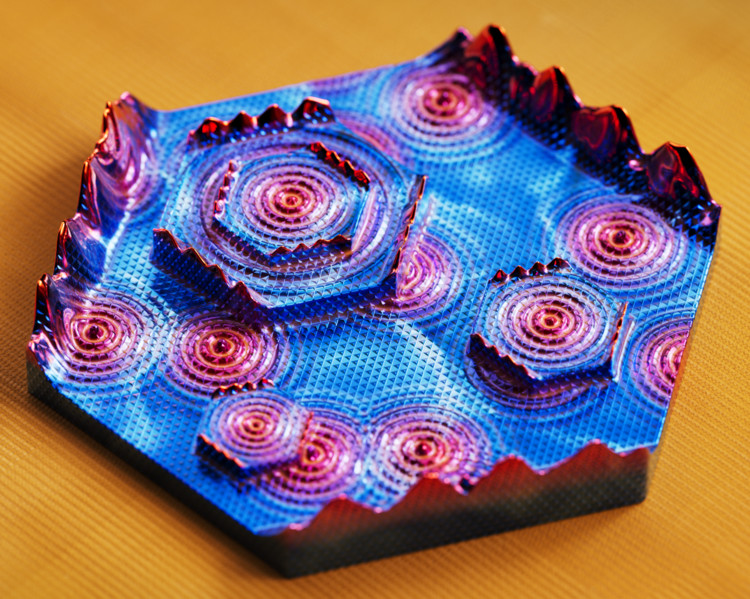
The finding, published on April 10th in the journal Nature, came when Princeton scientists discovered that an elemental solid crystal made of arsenic (As) atoms hosts a never-before-observed form of topological quantum behavior. They were able to explore and image this novel quantum state using a scanning tunneling microscope (STM) and photoemission spectroscopy, the latter a technique used to determine the relative energy of electrons in molecules and atoms.
This state combines, or “hybridizes,” two forms of topological quantum behavior—edge states and surface states, which are two types of quantum two-dimensional electron systems. These have been observed in previous experiments, but never simultaneously in the same material where they mix to form a new state of matter.
“This finding was completely unexpected,” said M. Zahid Hasan, the Eugene Higgins Professor of Physics at Princeton University, who led the research. “Nobody predicted it in theory before its observation.”
In recent years, the study of topological states of matter has attracted considerable attention among physicists and engineers and is presently the focus of much international interest and research. This area of study combines quantum physics with topology — a branch of theoretical mathematics that explores geometric properties that can be deformed but not intrinsically changed.
For more than a decade, scientists have used bismuth (Bi)-based topological insulators to demonstrate and explore exotic quantum effects in bulk solids mostly by manufacturing compound materials, like mixing Bi with selenium (Se), for example. However, this experiment is the first time topological effects have been discovered in crystals made of the element As.
“The search and discovery of novel topological properties of matter have emerged as one of the most sought-after treasures in modern physics, both from a fundamental physics point of view and for finding potential applications in next-generation quantum science and engineering,” said Hasan. “The discovery of this new topological state made in an elemental solid was enabled by multiple innovative experimental advances and instrumentations in our lab at Princeton.”
An elemental solid serves as an invaluable experimental platform for testing various concepts of topology. Up until now, bismuth has been the only element that hosts a rich tapestry of topology, leading to two decades of intensive research activities. This is partly attributed to the material's cleanliness and the ease of synthesis. However, the current discovery of even richer topological phenomena in arsenic will potentially pave the way for new and sustained research directions.
“For the first time, we demonstrate that, akin to different correlated phenomena, distinct topological orders can also interact and give rise to new and intriguing quantum phenomena,” Hasan said.
A topological material is the main component used to investigate the mysteries of quantum topology. This device acts as an insulator in its interior, which means that the electrons inside are not free to move around and therefore do not conduct electricity. However, the electrons on the device’s edges are free to move around, meaning they are conductive. Moreover, because of the special properties of topology, the electrons flowing along the edges are not hampered by any defects or deformations. This of type device has the potential not only of improving technology but also of generating a greater understanding of matter itself by probing quantum electronic properties.
Hasan noted that there is much interest in using topological materials for practical applications. But two important advances need to happen before this can be realized. First, quantum topological effects must be manifested at higher temperatures. Second, simple and elemental material systems (like silicon for conventional electronics) that can host the topological phenomena need to be found.
“In our labs we have efforts in both directions — we are searching for simpler materials systems with ease of fabrication where essential topological effects can be found,” said Hasan. “We are also searching for how these effects can be made to survive at room temperature.”

